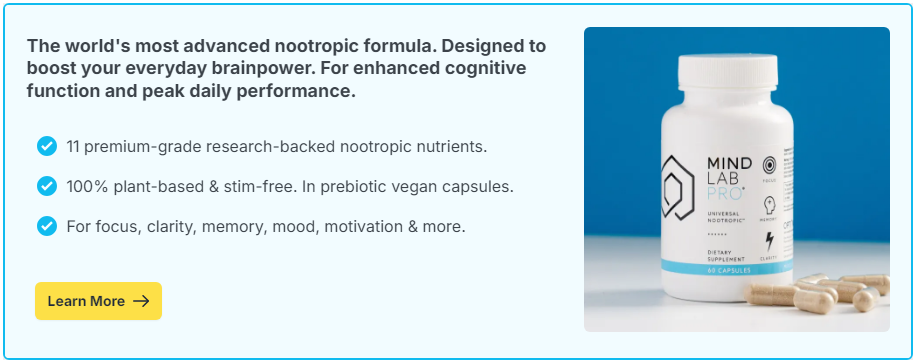
The lights warm up, the mic wakes up, and your clicker suddenly feels like a small wild animal. Pitch day compresses weeks of thinking into minutes. That pressure can steal words, wobble memory, and nudge your voice into a flutter. You can keep control. With a few physiology friendly habits, a tidy rehearsal plan, clean slidecraft, and an optional nootropic toolkit, you can step up with steady hands and a brain that behaves. No heroics required, only repeatable moves that work when the clock is ticking.
Contents
Why Pitch Day Feels Harder Than Practice, Work With Physiology
Nerves do not mean you are unprepared, they mean your body thinks something important is happening. Adrenaline rises, breathing climbs, and working memory shrinks just enough to make simple sentences feel like tongue twisters. This is normal. The fix is to give your body signals that it can widen attention again. Start with breath that favors the exhale. Try this pattern three times, inhale through the nose for four counts, hold for one, exhale through the mouth for six. The long exhale taps the brake on your stress response and frees up the mental bandwidth you need for your first two slides.
Next, bring your posture and gaze into the game. Stand tall with feet planted hip width, knees soft, shoulders down. Look at friendly faces in the first row, not at your slides. A face gives your brain social feedback that calms the system better than a glowing rectangle. Add light and temperature. Bright, even light helps alertness, while a slightly cooler room keeps you from feeling drowsy. If you can adjust the stage, ask for even wash lighting and a hint of airflow. Small environmental nudges add up when the heart is thumping.
Finally, protect working memory with external supports. Hold a printed one page run of show that lists opening hook, main proof points, live demo cue, and close. Keep a bottle of water on a stool in your sightline so you can pause with purpose. These props are not crutches, they are cognitive scaffolding. When the moment gets loud, you have a clear path back to your message.
Pre Pitch Setup, Tools, Checklists, and Warm Ups
Preparation is stagecraft for your brain. The night before, set out your clothing, pack your bag, and charge everything. Your bag should hold the clicker, extra batteries, HDMI or USB C adapters, a small extension cord, a gaffer tape strip, and a roll of painter’s tape to mark your stage position. Print two copies of your slide thumbnails, one for you, one for the stage manager. Back up slides on a thumb drive and in the cloud. Redundancy lowers cognitive load because your mind stops rehearsing disaster.
Fuel well. Heavy meals make you sluggish, sugar spikes wobble you, and too little food leaves you shaky. Aim for protein, slow carbs, and color. Eggs with a small tortilla and avocado, Greek yogurt with berries and oats, tofu with rice and vegetables. Hydrate early, then sip during sound check. Keep a mint or lozenge in your pocket for a dry mouth surprise. Warm the voice and face. Hum gently from low to high, say a handful of tongue twisters slowly, then smile wide and relax. These goofy moves unlock articulation and reduce the odds of a wooden first sentence.
Run your tech like a pilot’s checklist. Test the remote. Check animations and video sound. Confirm timer visibility. Walk the stage and set two visual anchors on the floor, one for your opening, one for your close. Practice a slow turn and a small step on each anchor so your body has a map when adrenaline wants to pace. Finally, rehearse your first minute out loud two or three times with the actual clicker in hand. The goal is to make slide one feel familiar so the rest can flow.
Stimulant Strategy Without Shakes, Calm Alert Energy
Presenting on a caffeine spike can turn confident into rushed. A steady plan works better. Use small, timed doses in the hours before you speak, then stop early. Many presenters like pairing caffeine with L Theanine because the mix often feels clear and calm rather than buzzy. If you enjoy coffee, try half a cup two hours before showtime, then switch to water. If you prefer precision, a small caffeine gum is easier to dose. Keep a hard rule, no last minute espresso in the green room. It helps less than it hurts.
Consider additional supports that fit your timeline. L Tyrosine is a building block for dopamine and norepinephrine, and some presenters use it earlier in the day when decisions stack and rehearsals feel stressful. Rhodiola Rosea shows up in many kits for stamina during a long conference day, better earlier than late. Phosphatidylserine, often shortened to PS, is not stimulating, and many people place it near the final polish window to support composure while writing notes and handling last edits. Citicoline is commonly used for clear attention during complex work, which makes it a candidate for your last revision session, not five minutes before you speak. Maritime Pine Bark Extract is valued for circulation support, and some presenters place it in the morning on show days. Always consider your own response and any guidance from your clinician.
Build a simple rhythm around these choices. Hydrate on each rehearsal break. Take a short walk outside or near a window. Keep your phone face down and off the table so your visual field stays clean. The idea is to arrive at showtime feeling alert, not wired, present, not hurried. Your words will thank you.
Nootropic Toolkit for Memory, Confidence, and Clarity
Nootropics can complement practice when used thoughtfully. The aim is not fireworks, the aim is a smoother signal when you perform. The ingredients below are widely used and often appear together in comprehensive formulas. Start low, track your response, and time them to your workflow rather than stacking everything at once.
Calm on Command
- L Theanine: commonly paired with caffeine for calm focus. Many presenters like it during slide review and backstage priming because it steadies attention without drowsiness at typical amounts.
- Phosphatidylserine, PS: included by some for attention and composure. Useful during the final hour when you polish wording and want steady delivery, not extra speed.
Attention and Mental Energy
- Citicoline: often chosen for clear mental energy and sustained attention during complex edits, rehearsal tweaks, or Q and A prep. It pairs well with a measured stimulant plan.
- L Tyrosine: a precursor for dopamine and norepinephrine, used by some earlier on show days when the schedule is dense and decisions are rapid fire.
Stress Resistance
- Rhodiola Rosea: used for fatigue resistance across long event days with multiple run throughs and networking. Place it in the first half of the day so it does not crowd sleep later.
- Maritime Pine Bark Extract: valued for a fresh, clear feel when standing under stage lights for extended periods. Many presenters take it with their first water bottle.
Longer Horizon Memory and Clarity
- Bacopa Monnieri: a long game ingredient taken daily over weeks for learning and recall. It trains the background skill of retrieving names and key points during Q and A.
- Lion’s Mane Mushroom: widely used for general cognitive support. People describe a clean clarity that suits creative phrasing and smooth transitions between slides.
Pick roles, not quantity. One calm focus option plus one attention option is usually plenty on show day. Save longer horizon supports for your daily routine so benefits accumulate between events. Your message and rehearsal still do most of the lifting, the toolkit helps you keep the channel clear.
Slidecraft, Rehearsal, and On Stage Tactics That Hold Under Pressure
Slides should serve your story, not replace it. Keep words sparse, fonts large, and contrast high. One idea per slide is the safest rule. Use images that carry meaning, not decoration. If a slide must be dense for investors, build it in layers so each click adds one element. This keeps the audience with you instead of reading ahead. Place your headline as a claim, not a label, such as Revenue expanded in three steps rather than Q3 metrics. Claims focus attention and make your voice the channel for proof.
Rehearsal is a craft. Record a two minute version of your opening and watch it once, then fix only one thing per round. Run short reps rather than one marathon. Practice your transitions with the actual clicker and the same pacing you will use on stage. Build a Q and A bank, ten likely questions with one sentence answers and one evidence point each. If you blank, you have a scaffold to climb back into the answer. Add a fallback move for live demos, a screenshot slide with a one line narrative in case the internet gremlin appears.
On stage, use resets. If you race, plant your feet and sip water. If a slide surprises you, step to your anchor, name the slide’s point in one clear sentence, then continue. For audience engagement, ask a show of hands or pose a single sentence question, then pause. Silence is not your enemy, it is a tool that lets ideas land. When your brain stutters, smile and say, give me one beat to say this clearly. That single sentence buys your working memory the space it needs, and the audience roots for you when you are real.

